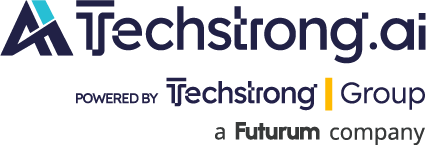
Now that the initial wave of GenAI hype is behind us and companies have earmarked their budgets for GenAI implementations — enterprise IT leaders are looking for ways to deploy GenAI most effectively. But are they getting the return on their investments and successfully managing the change GenAI brings to their organizations?
According to a recent study conducted by ISG on behalf of enterprise search and knowledge discovery provider Glean, enterprise budgets for GenAI are expected to almost triple by next year. Survey respondents said GenAI “projects” consumed an average of 1.5% of budgets in 2023 and are expected to rise to 2.7% in 2024 and 4.3% in 2025. For the survey, ISG reached 224 IT leaders in the United States and Europe, with companies that employ at least 1,000 and have at least $100 million in annual revenue.
Not unexpectedly, the higher the organization’s annual revenue, the bigger the organization’s budget for GenAI. According to the survey of companies with over $5 billion in annual revenue, 26% said they would invest more than 10% of their IT budget into GenAI next year. At many organizations, this investment will cost other IT initiatives, as more than half of IT leaders said the GenAI budget would take the budget from other IT spending plans.
With such a rapid move to GenAI, the survey sought to understand how organizations may or may not measure their return on investment. Respondents appeared split, with 28% saying they generated a positive return. In comparison, 31% said they believe that they’re developing a positive return but don’t have a way to measure that return established. While 17% said they’re not generating a positive return yet, they expect they will in the next year. A trailing 17% said it’s too early for them to measure such a return, and 6% don’t expect a positive return within the following year.
How is GenAI Managed and Success Measured?
Regarding GenAI success — and managing the change that comes with these deployments — experts say it’s crucial not to panic or get carried away by the ongoing GenAI hype. “Think of it as just another technology that’s here to help improve your productivity,” advises Ramprakash Ramamoorthy, director of AI research at ManageEngine. “It’s going to continue to augment the capabilities of individuals, and from what we’ve seen, fears that it’s going to take jobs away are misplaced. It’s important to understand that this technology, if deployed in the right areas, can profoundly impact business. Although the costs associated with these systems are very high, GenAI is sure to be a game changer,” Ramamoorthy says.
To date, those high costs seem to be paying off for most. The sentiment toward the success of GenAI deployments has been positive, and employee productivity was cited as the top way to measure the return generated by GenAI, with 57% of respondents saying that it will be how they measure GenAI effectiveness going forward. And for those who have already implemented pilots, 46% of respondents reported that their results were a “little better” to “much better” than they’d expected.
Yet, experts say the success of GenAI may create angst among staff as they see their knowledge transferred to the GenAI models — and less of a need for their skills going forward. This is something key stakeholders should prepare.
“Machine learning projects always face strong headwinds from stakeholders that see a risk that their knowledge and know-how will be commoditized and replaced by algorithms. For all the efficiency gains possible with GenAI, it is important not to alienate key experts,” says Manfred Kügel, data scientist and IoT industry advisor for AI and analytics provider SAS.
However, enterprises must help their staffers realize that the rapid change from AI is here to stay. “There is no option not to embrace and adopt it[GenAI] if you want to remain competitive and relevant in the medium to long term. When an organization’s leadership demonstrates this open, pragmatic mindset, it sets the tone for the rest of the employees,” says Maulik Bhagat, executive vice president of services and innovation at AArete, a global management and technology consulting firm.
Bhagat says it comes down to communication: Explaining to staff the benefits of GenAI, how GenAI aligns with the company’s purpose, and how GenAI is an opportunity for learning overall. “An opportunity to achieve goals faster and with less, an opportunity to serve the customer and the customer community more effectively, and so on. Organizations should also adopt and communicate a solid governance framework over the data and application of GenAI use cases, demonstrating principles of ethics, transparency, traceability, etc. This helps build confidence with internal and external stakeholders, as well as with risk and compliance,” he says.


